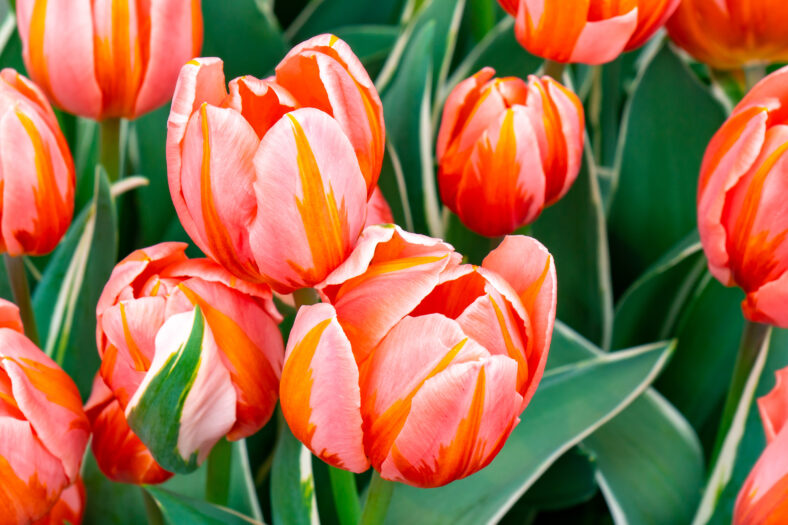The Symbolism Behind Tulips And What Each Color Means

As we inch closer to winter melting away, you might have your sights set on spring. The tulip, a beautiful flower variety that’s soared in prominence around the globe, will be one of the first blooms to make an appearance in your garden this season.
Many people associate tulips with the Netherlands due to their iconic status there, but their true origins actually lie in Central Asia, where they once grew as wildflowers.
Tulips made their way to Europe in the 16th century, thanks to the biologist Carolus Clusius. Then, during the 17th century, their popularity skyrocketed, and Europeans were enamored with their vibrant blooms.
In the Netherlands, tulip obsession even reached such a peak that a phenomenon called “tulip mania” took hold, driving flower prices to unsustainable levels before the market collapsed.
Today, tulips represent one of the most beloved flowers worldwide. Not only are they stunning to look at, coming in a variety of styles and colors, but they are also steeped in meaningful symbolism.
The Symbolism Of Tulips
Tulips are most commonly tied to the meaning of perfect and deep love. As a timeless flower that’s been cherished for centuries, they’ve become a symbol of devotion and affection.
That’s why tulips are great gifts for anyone you share unconditional love with, whether that is your partner, best friend, parent, or child.
Since these flowers bloom at the start of spring, they also carry spiritual meanings of rebirth and renewal. So, buying a bouquet of these blooms for someone who’s navigating a period of change or embarking on a new adventure makes for a thoughtful present.

Sign up for Chip Chick’s newsletter and get stories like this delivered to your inbox.
Additionally, tulips have come to symbolize charity dating back to the Victorian era. Their vibrant, joyful nature, paired with the promise of fresh starts in a new season, has made them a popular emblem for charitable organizations.
Aside from these overarching symbolic themes, the specific colors of tulips hold individual meanings, too. It’s probably not a surprise that red blooms symbolize romance and passion, making them a loving present for significant others.
Pink tulips, while a bit less passionate than red tulips, hold similar meanings of care, affection, and well wishes.
Striking white tulips, on the other hand, represent purity, respect, and forgiveness, while purple tulips have a more mysterious aura.
Due to purple dye’s rarity, it was once a luxury reserved only for royals or the extremely wealthy. So, purple tulips have come to hold regal meanings associated with elegance and royalty.
Next, the color blue tends to evoke feelings of calmness and trust. Blue tulips do the same, symbolizing serenity and tranquility. When given to loved ones, they can serve as a reminder to pause and take a breath.
Last but not least, both yellow and orange tulips are uplifting in their own right. Yellow tulips are considered one of the happiest flowers, signifying joy and hope. Plus, planting them in your front or backyard is said to bring prosperity and good luck to your home.
As for orange tulips, they radiate energy and enthusiasm. Their bright hue makes them the perfect choice for celebrating accomplishments or simply lifting someone’s spirits.
More About:Gardening